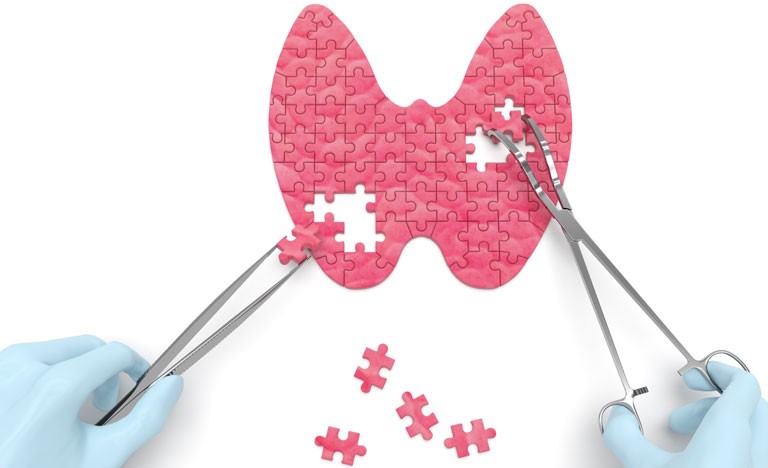The first set of comprehensive, evidence-based clinical guidelines for surgical treatment of thyroid disease has been published in Annals of Surgery.
The guidelines provide an expert perspective on current approaches to surgical management for patients with benign and malignant thyroid disease. “To help provide safe, effective, and appropriate care of patients, these American Association on Endocrine Surgeons(AAES)-sponsored multidisciplinary clinical guidelines analyse the conduct, indications, and outcomes of adult thyroid surgery guided by a comprehensive evidence-based review of the medical literature,” according to the guideline statement. The lead author was Kepal N Patel, MD, of NYU Langone Health, New York, NY.
Emphasis on evidence-based, personalised care for patients undergoing thyroidectomy
The guidelines consist of a total of 66 specific recommendations, identified by a search of the medical literature from 1985 to 2018 and review by a multidisciplinary panel of 19 experts in thyroid disorders.
Recommendations are graded according to the strength and quality of the supporting evidence; the full guidelines document provides guidance on how to best apply the recommendations to individual patients. The project was coordinated by Sally E Carty, MD, of University of Pittsburgh School of Medicine and Christopher R McHenry, MD, of Case Western Reserve University, Cleveland.
Thyroidectomy, referring to any type of thyroid surgery, is a common procedure – more than 100,000 thyroidectomies are performed each year in the United States. While thyroidectomy is “typically a definitive and often curative procedure,” ongoing advances in diagnosis and management have led to variability and even controversy in the treatment of thyroid disease.
While other specialty societies have published recommendations addressing the management of thyroid nodules and thyroid cancer, the new AAES guidelines focus on surgical management of thyroid disease in adults.
Specific objectives include:
Helping surgical team members understand the epidemiology and pathogenesis of thyroid disease. Thyroidectomy is most frequently performed for thyroid dysfunction, symptomatic benign thyroid nodules, and thyroid cancer, including the newer category of “borderline” thyroid tumours.
Outlining the diagnosis of thyroid disease, including the clinical findings; imaging, including ultrasound examination; thyroid function tests; voice assessment, reflecting the risk of vocal fold dysfunction related to thyroid disease and surgery; and the use of fine-needle aspiration biopsy, a key test for evaluation of suspicious thyroid nodules and lymph nodes.
Defining the indications for thyroidectomy, including recommendations related to the extent and outcomes of surgery for patients with different categories of thyroid disease. One recommendation states that, when possible, thyroidectomy should be performed by surgeons who perform a high volume of such procedures.
Detailing methods for safe and effective perioperative management, including steps to prevent complications and the use of thyroid tissue diagnosis during surgery.
Analysing the optimal management of thyroid cancer – emphasising a personalised, evidence-based approach tailored to the patient’s situation and preferences.
On behalf of the AAES, the members of the expert panel hope their efforts will meet the need for evidence-based recommendations to “define practice, personalise care, stratify risk, reduce health care costs, improve outcomes, and identify rational challenges for future efforts.”
They conclude: “Throughout the writing process, [our] intent was to advise surgeons about the right thing to do for the patient” in need of surgical treatment for thyroid disease.










